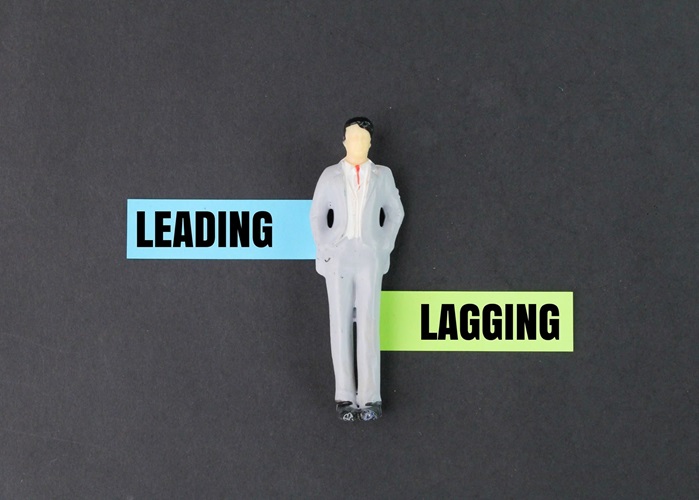-
Beyond the Rearview: Building a Future View of Safety With Leading Indicators
Blog SponsoredDiscover how to evolve from backward-looking metrics to forward-looking risk prevention, guided by insights from Sika’s Head of Global EHS. -
Expertise Meets Innovation: The Future of Safety Training is Still Human
BlogToday’s workforce is younger, more diverse, more mobile, and often less experienced. They’re tech-savvy but attention-poor. They’re not going to absorb anything from a two-hour slideshow built in 2007. They need hands-on experience. Real mentorship. -
How We’re Navigating Change (and Helping Others Do the Same)
BlogThe landscape of EHS&S is evolving rapidly. EHS&S professionals are navigating a wave of regulatory shifts—from the expansion of PFAS oversight to the redefining of chemical recycling rules to making ESG disclosures. -
Empowering EHS&S Leadership Amid Uncertainty and Change
BlogThe drivers and contexts that anchor EHS&S risk management and decision-making are undergoing a stress test unlike any seen before. -
Influencing Up: How to Get Buy-in from Senior Leaders
BlogSometimes a great idea falls flat, not because it’s a bad idea, but because people just don’t see how it connects to them. Knowing how to engage effectively with organizational leadership, also known as “influencing up,” can help make sure decision-makers tune in instead of out. -
Why You Need to Take a Risk-Based Approach to EHS Management
BlogIt’s well known that European companies are leaders in risk-first thinking in EHS approaches, and North American organizations are increasingly taking notice. -
Rethinking Your Company’s Approach to ESG Disclosures
BlogFor many organizations, ESG disclosure practices are in a state of transition, driven by regulations like California’s climate laws and CSRD, as well as rising stakeholder and investor expectations, juxtaposed with the current political climate and lingering anti-ESG sentiment. -
The Evolution of ESG & Sustainability Reporting
BlogSustainability reporting is at a critical inflection point due to the convergence of regulatory mandates, investor scrutiny, and public demand for transparency. -
How Machine Intelligence is Transforming EHS & Sustainability
BlogOrganizations today are under mounting pressure to enhance risk prediction, streamline compliance, and demonstrate measurable EHS impact—all in real time. -
Assessing Climate Risks & Building Resilience
BlogInvestors, regulators, and customers are increasingly demanding transparency around climate risks and resilience planning. Beyond these commercial pressures, climate exposures can also present physical and operational risks that can result in bottom line impacts. -
Supply Chain Sustainability: You Can’t Manage What You Can’t Measure
BlogWe’re currently at a crossroads in manufacturing. Sustainability used to be a sidecar. Now it's part of the engine. -
The New Business Imperative: Optimizing Water Use
BlogMultiple forces such as regulatory pressures, investor expectations, and community demands are converging to make sustainable water management an imperative for enterprises. -
A New Era of Product Stewardship
BlogThe acceleration of global product-level sustainability regulations—such as CSRD, CSDDD, and CBAM—is creating unprecedented complexity for companies managing large and diverse product portfolios. These frameworks demand precise, verifiable, and standardized data on product composition, life cycle impact, and supply chain due diligence. -
Your Best Defense Amid Shifting Regulations
BlogEHS regulations are always changing, and right now, companies in the U.S. are facing a lot of uncertainty. This makes managing compliance programs and keeping track of changes more complicated, especially if your company operates in multiple states. -
The Many Ways AI is Improving Workplace Safety
BlogWorkplace safety is at an inflection point. While general injury rates have improved dramatically since the 1970s, the rate of Serious Injuries and Fatalities (SIFs) has remained stubbornly static. This plateau highlights a critical gap that traditional safety methods haven't been able to overcome. -
How Compliance Becomes a Strategic Engine
Blog SponsoredIn the past, environmental compliance was a back-office function—reactive, procedural, and largely invisible to the boardroom. That’s changing. -
“We Need Your Emissions Data”: What to Do When a Stakeholder Comes Calling
BlogAs expectations from investors and customers around climate transparency continue to rise, many companies are being pushed to develop more mature and reliable greenhouse gas (GHG) quantification programs. -
Aligning Business & Digital Strategies to Drive EHS&S Performance Excellence in an Age of Emerging AI Technology
Blog SponsoredAssessing and aligning business process maturity aspirations with your technology strategy is a best practice for achieving Environmental, Health, Safety and Sustainability (EHS&S) performance excellence. -
How Two Technical Attributes Can “Future Proof” Your EHS&S Software
Blog SponsoredDoes your company have a plan to adapt to changes in regulatory expectations and shifting priorities? Will your compliance software interfaces and reports still make sense next year? Learn which technical attributes to look for when choosing EHS&S software and how they enable organizations to flex to unforeseen growth and uncertain regulatory demands. -
Incorporating Health Risks into Your Sustainability Strategy
BlogDr. Natalie Egnot, Project Director at Stantec, shares her insights on how taking a more comprehensive approach to considering health risks, opportunities, and impacts can benefit both your company and its stakeholders.




















